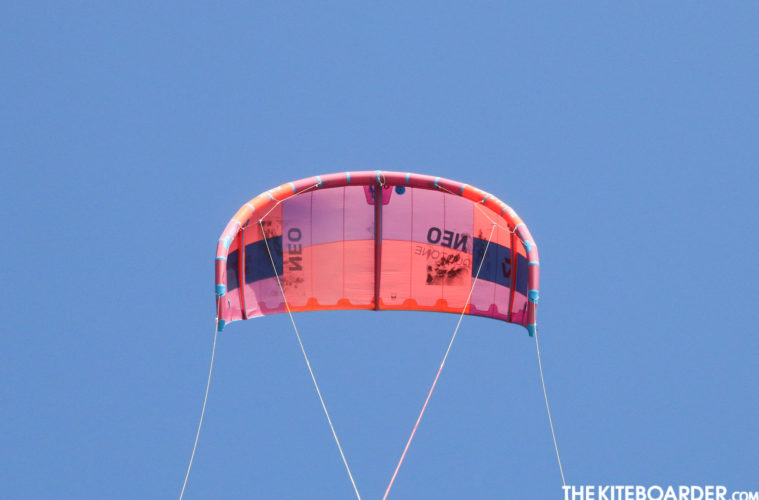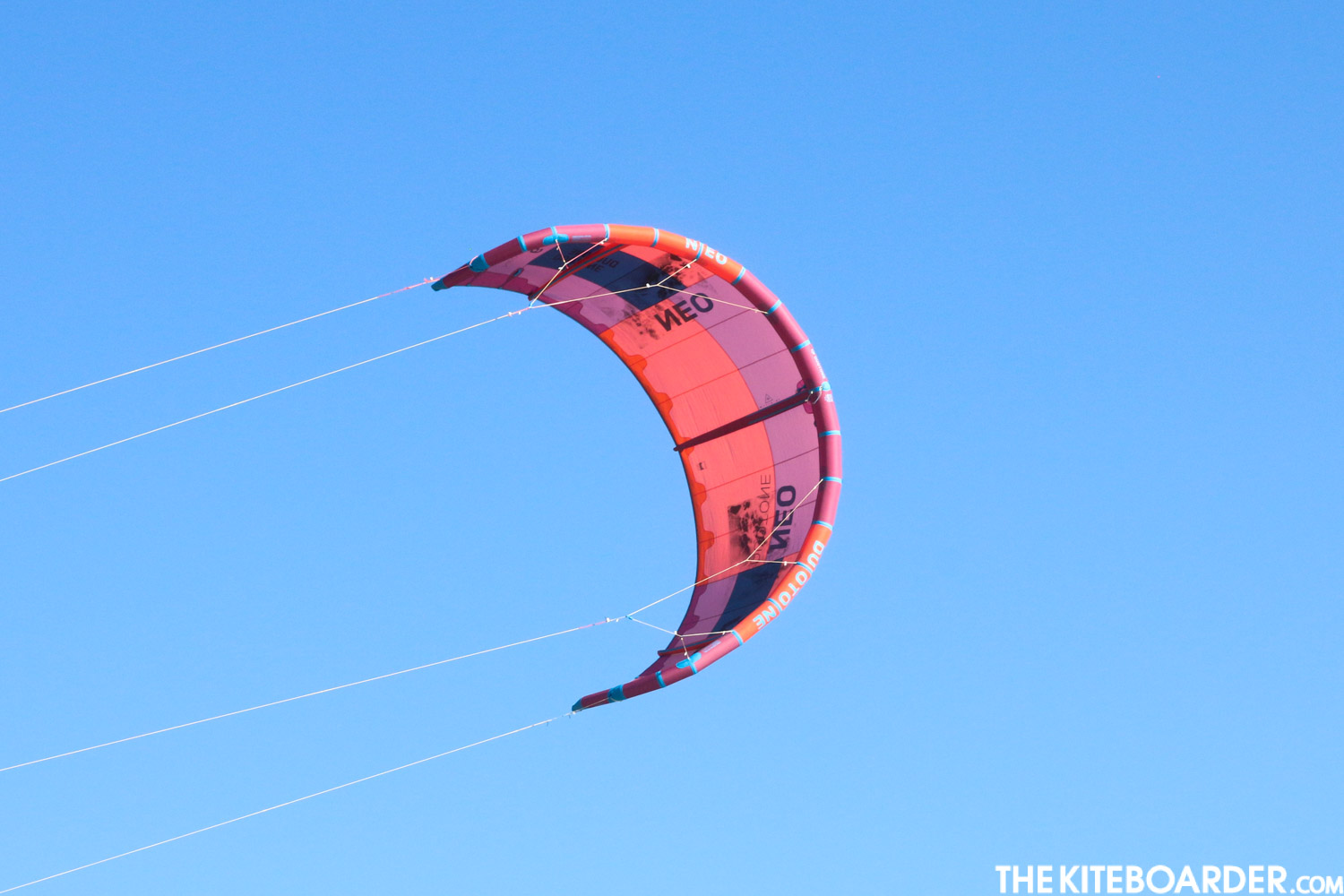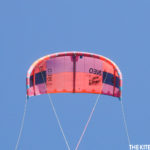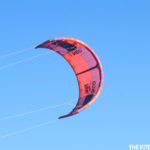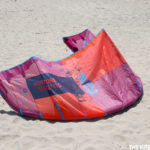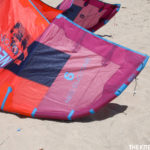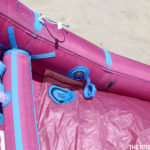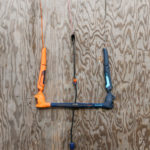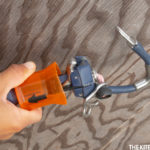Sizes Available: 3, 4, 5, 6, 7, 8, 9, 10, 11, 12m
Sizes Tested: 6, 8m
Duotone Says:
The Neo is a high-performance purebred wave-riding kite with incredible handling and excellent drifting capabilities that can also perform for freeriding and foiling. If you like nothing better than carving smooth bottom turns and smashing off the lips, then the NEO is the kite for you. Developed by Ken Winner alongside our pro wave riders and World Champions Airton Cozzolino, Matchu Lopes, Sebastian Ribeiro and Patri McLaughlin, this is the kite of choice on the GKA Strapless World Tour. Now with improved handling, thanks to the special Flex Segment which is integrated into the leading edge. This unique feature allows the kite to twist more when it is turning; this increases the responsiveness of the kite and results in a fast more dynamic ride. Of course, the NEO is still incredibly powerful and thanks to its lightweight, yet tough design the drifting ability is unsurpassed. Combined with the revolutionary Click Bar, you get a huge depower throw and the ability to dump all the power from the kite in an instant. Not only is this feature important during critical moments on the wave, it is also crucial for landing technical strapless tricks. The kite can be tuned to a freeride setting, which is great for cruising, boosting and foiling too. No matter what kind of conditions you ride, onshore, offshore, from small to flatwater strapless freestyle, the NEO is the only wave kite you’ll need!
Visit for more info: www.duotonesports.com/kiteboarding/kites/neo
TKB Says:
The Neo is Duotone’s dedicated wave kite with a medium aspect 3-strut frame, slight delta-shaped canopy and medium-sized diameter leading edge that is known for its power and precise handling. When it comes to inflation, Duotone’s large diameter inflation valve dubbed the ”˜Airport Valve II’ connects directly with Duotone’s pump hose without the use of a nozzle and the inflation system’s twist valve rotates with the insertion of the hose to keep air in the system. Deflation happens through both the inflation valve and a dump valve on one side of the kite, making both inflation and deflation quick and easy. The Neo features two settings on the front bridle for adjusting between high depower and medium depower, and uses a single pulley to help adjust the kite’s angle of attack. The Neo comes with front bridle attachment points that end in knots and wingtip pigtails that end in loops. We tested the Neo with the front bridle in the high depower setting for our side-on wind conditions and we tested the wingtip steering setting on the softer setting. If our wind direction was more on shore we would have likely gone for the more powered bridle setting.
We got the chance to test the 6m in both powered and underpowered conditions and it did remarkably well on both ends of the range. The Neo is known for its swift steering response; even when in the soft setting the kite reaction is noticeably crisp and the turning radius is pretty tight with a pivot style turn. The 6m turning speed is fast but not scary fast which delivers the perfect blend of maneuverability and kite placement while remaining predictable with good feedback into the bar and no surprises. The power doesn’t feel overly grunty and the power delivery along the fairly long throw feels progressive and comfortable, yet there’s tons of depower when the bar is sheeted all the way out. During the underpowered portion of our session on the 6m we noticed that when we over-sheeted the small kite it was fairly resistant to stalling for a 6m. The Neo likes to sail through lulls and is quick to power up when back into the wind. We found the swift turning and tight pivot turn of the Neo was really easy to place in the window and the drifting bought us some extra time for an extra hit to the lip with good line tension to recover. The changes over the last few years to the Neo have made this kite more user-friendly and reactive, finding a better balance in light to medium bar pressure and quick turning with balance pull and depower that is ideal for tearing apart the waves with surgical precision.
The Click bar now comes with either the smaller fixed length 42cm wide bar with 20-22m lines or the original 49cm length with 22m or 24m lines. The Click bar features a single center-line safety depower system, and an adjustable attachment point that allows you to swap back and forth between a high and low-V (it’s worth noting that you don’t have to re-thread the entire length of a line through a ring to accomplish the change). The outside lines end in knots and the center lines end in loops. The Click bar features a molded plastic throw line that untwists itself after you spin, a sliding stopper and Duotone’s proven push away quick release. The quick release when opened horizontally, locks into an open position, holding the gate open. Reassembly still requires two hands: one hand holds the loop in position and pushes on the catch button while the other hand raises the quick release handle so the catch can move back into its closed position and then the handle is released. Since this is a surf test we requested the shortest quick release loop, which Duotone calls its “rope harness kit.” This option keeps the quick release and all your throw very close to your body and features a metal V in the loop that offers frictionless movement on a slider bar/rope harness. This option is great for dedicated surfers or foilkiters using harnesses with rope travelers and never plan on unhooking.
The Click bar settles the debate between above or below the bar tuning by placing it exactly at your fingertips. The twisting motion for powering up takes a little bit of focus while riding and the button for depower is easily accessed at all times. While it’s a big shift from the systems we have come to know, seamless controls like this are the future of the sport. The ratchet nob built into the bar end is easy to grab a hold of and rotate while kiting or to tune on the fly. The Click bar also integrates a visual indicator that reveals the position the bar is set to this is actually a very nice feature. Compared to other systems, the mechanics of Duotone’s Click bar is entirely closed, which means you won’t be washing it out. The Click bar features retractable bar bungees, soft bar ends and integrated floats with a fairly dense EVA grip that feels asymmetrical in your palm with subtle raised bumps between fingers, and a very comfortable stamp pattern the entire length of the bar.
Visit for more info on the bar: www.duotonesports.com/kiteboarding/bars


